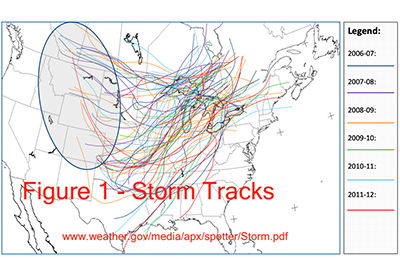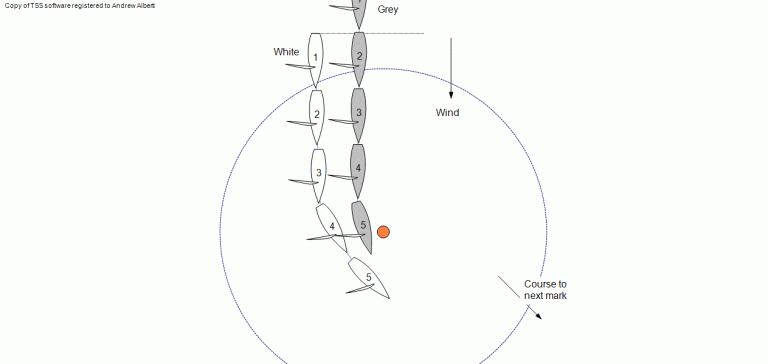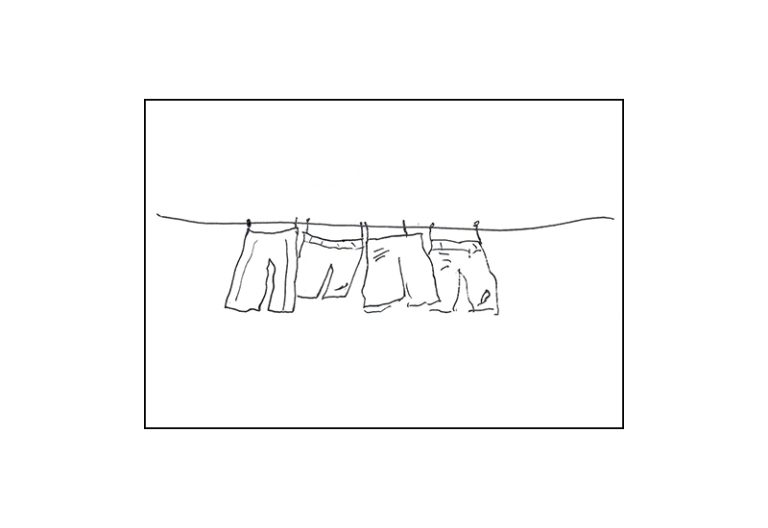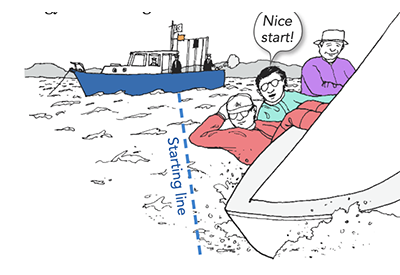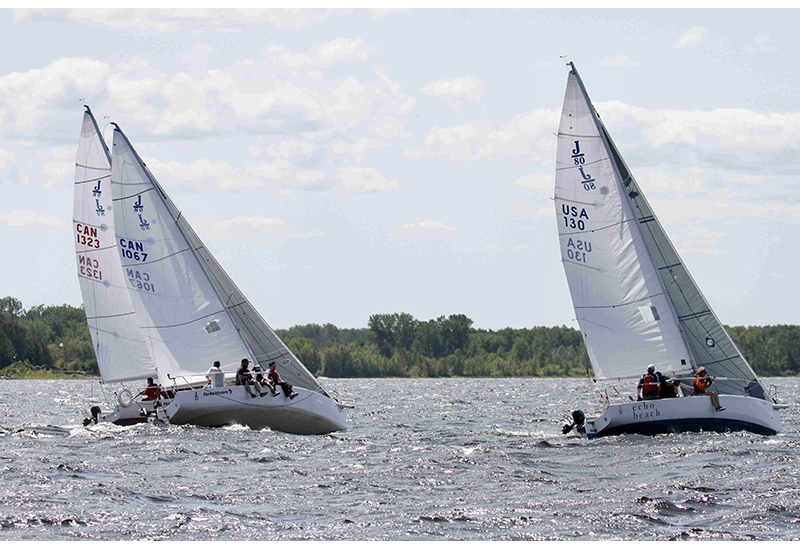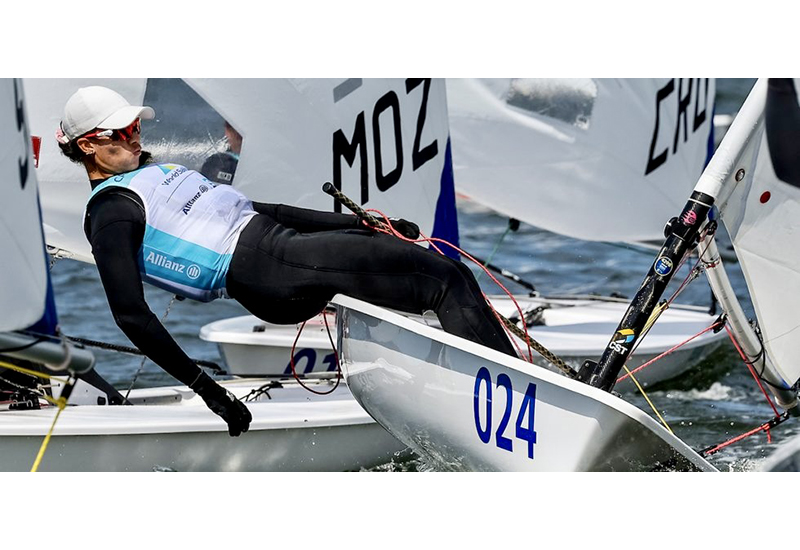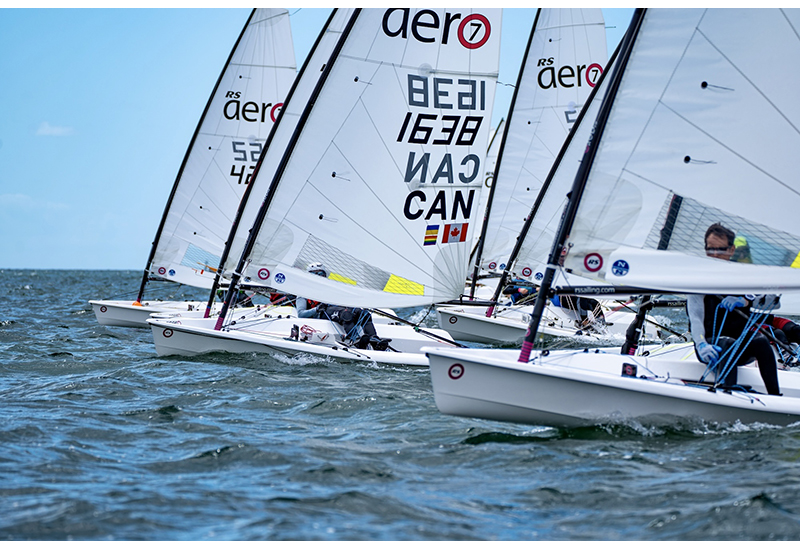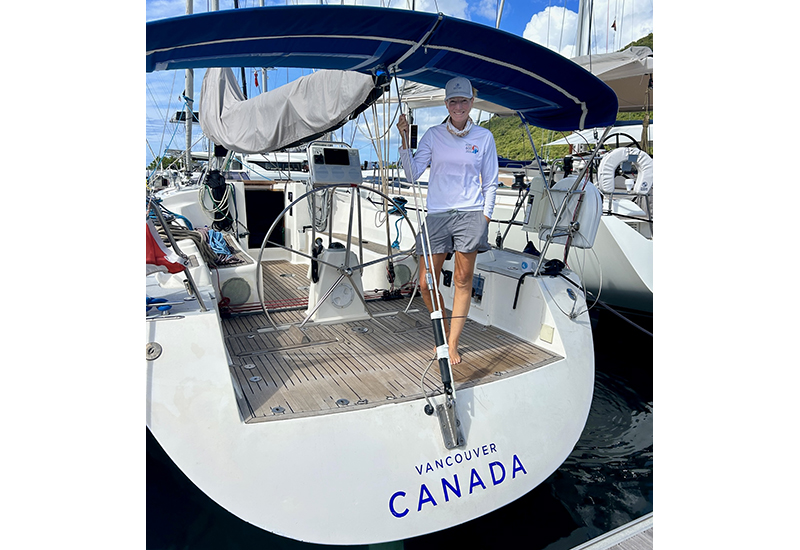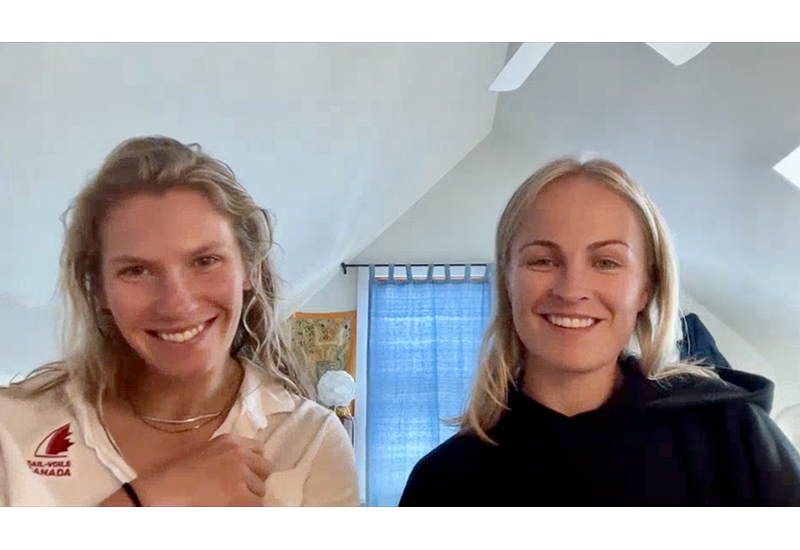The Rules Guy: Mark Room – When Can You Gybe?
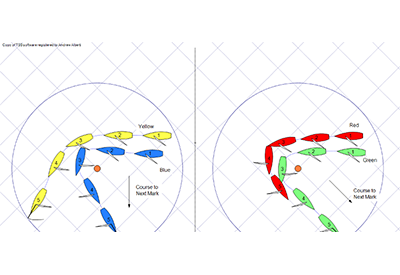
May 4, 2022
I have now written two articles about mark-room at a gybe mark (Part 1 and Part 2). In both cases, the mark denotes a point at which boats would clearly need to assume a different tack to sail to the next mark. We typically call these marks gybe marks, a term for which there is broad, but unwritten agreement as there are no definitions for gybe marks in the Racing Rules of Sailing. Nevertheless, two rules change depending on whether a gybe is required or not.
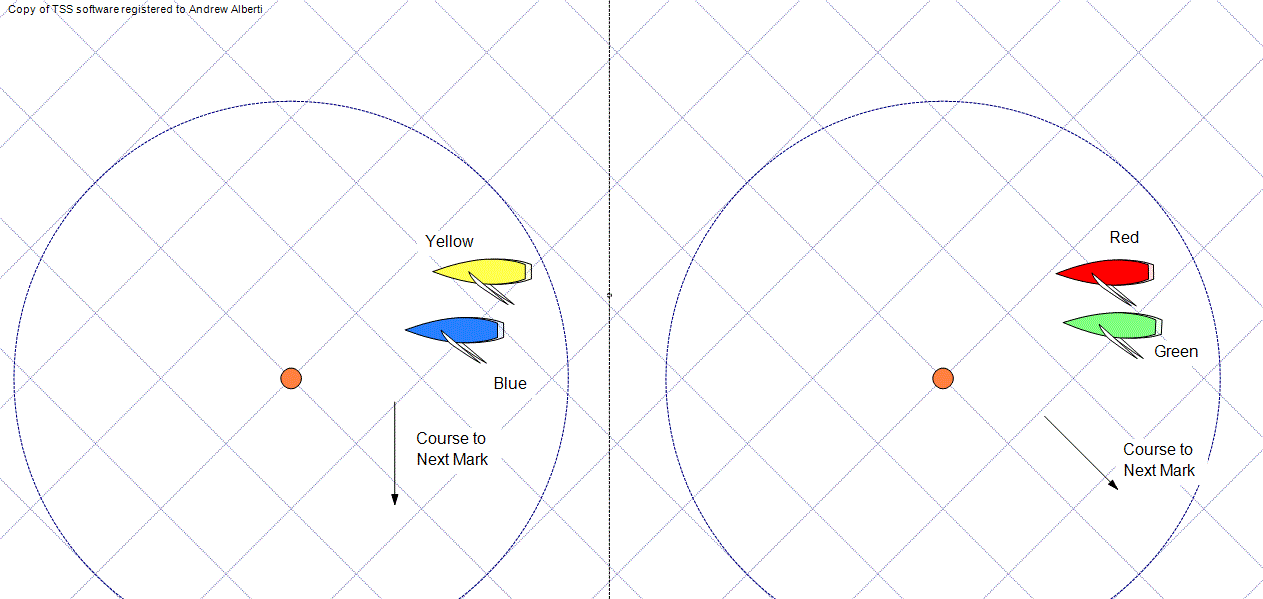
The diagrams illustrate markedly different possibilities. On the left side, Blue and Yellow are approaching a mark on a beam reach. The next leg is a run. Boats can sail on either tack on the run. So, there are two possible proper courses to the next mark, and for neither boat is there any “necessity” to sail one tack or another. Blue chooses one of these by gybing and sailing on port, while Yellow chooses the other and just bears away on starboard.
On the right side, we also have two boats, this time Red and Green, approaching a mark on a beam reach. The next leg is a port-tack reach. The proper course to the next mark is definitely on port tack, so both boats gybe. Part (b) of the definition of mark-room says, “room to round or pass the mark as necessary to sail the course” (the underlining is not part of the rule but the word is significant and should be noted by the reader). All four boats were free to gybe at the mark, but only for Red and Green is it “necessary” to gybe to sail the course. In the case on the left it is not necessary to gybe, so the gybe and the room needed for it are not part of the mark-room. On the right, it is necessary to gybe, so the gybe and the room for it are included in the mark-room.
Rule 18.4 says “when an inside overlapped right-of-way boat must gybe at a mark to sail her proper course…” (again the underlining is not part of the rule). On the left, Blue does not have to gybe to sail her proper course. She has a choice of two proper courses, and she is allowed to choose either one. Rule 18.4 does not apply. On the right though, Green must gybe to sail her proper course, so rule 18.4 does apply to her.
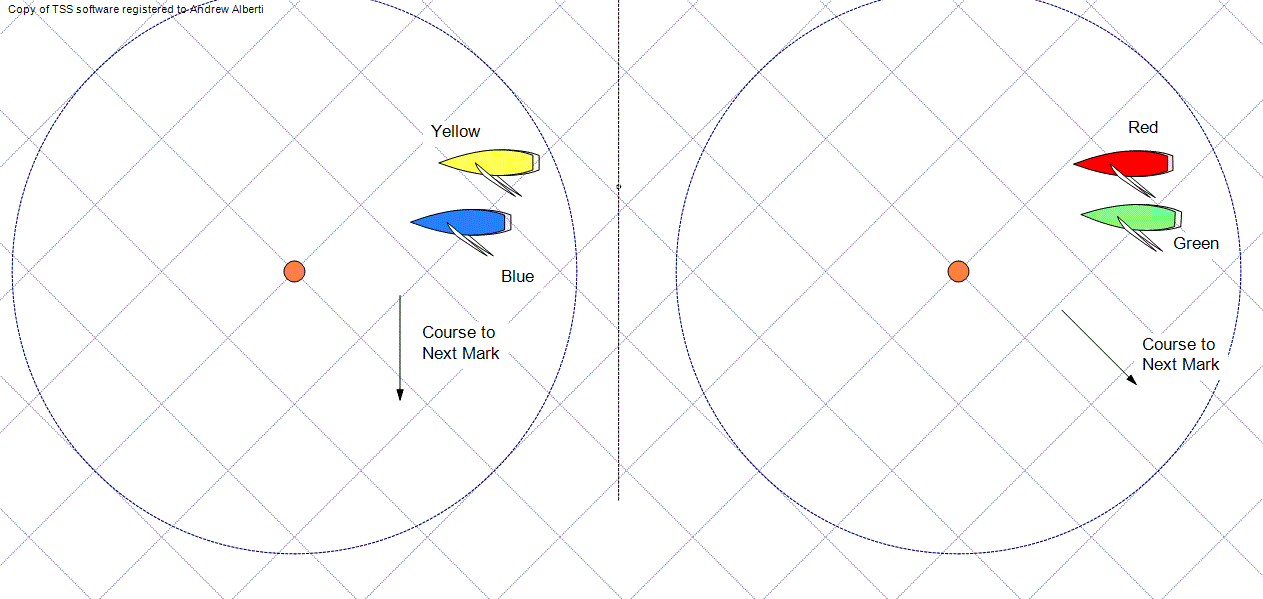
In the second diagram, we see two pairs of boats taking very similar paths. All four boats are approaching their respective marks. Green and Blue are overlapped inside Red and Yellow. are entitled to mark-room. Yellow and Red both head up and try to follow astern of Blue and Green. Blue and Green both gybe and end up in a port / starboard situation with Yellow and Red. In the diagram on the left, the course to the next mark is directly downwind. The gybe was not necessary to sail the course. Blue’s mark-room did not include room to gybe. She is breaking rule 10 and is not exonerated. In the diagram on the right, the gybe is necessary to sail the course. The mark-room for Green includes room to gybe and she is exonerated under rule 43.1(b) for breaking rule 10.
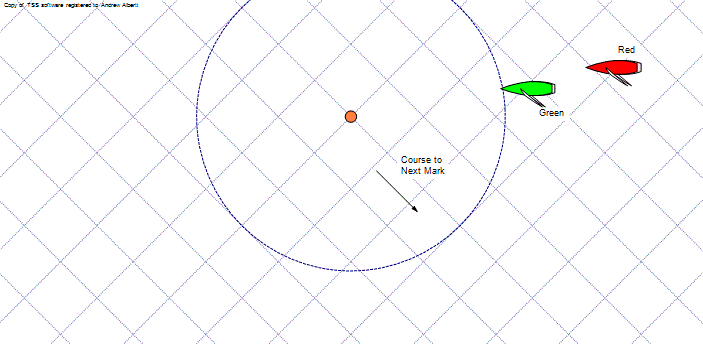
In the third diagram, Green decides not to gybe. The proper course to the next mark is clearly on port tack, so Green clearly has to gybe to sail that course. Green is an inside, overlapped, right-of-way boat so Rule 18.4 applies to her. By position 6, Green has clearly sailed further from the mark than her proper course, before she gybes so she has broken Rule 18.4.
|
Mark-Room Room for a boat to leave a mark on the required side. Also, (a) room to sail to the mark when her proper course is to sail close to it, and (b) room to round or pass the mark as necessary to sail the course without touching the mark. However, mark-room for a boat does not include room to tack unless she is overlapped inside and to windward of the boat required to give mark-room and she would be fetching the mark after her tack. Zone The area around a mark within a distance of three hull lengths of the boat nearer to it. A boat is in the zone when any part of her hull is in the zone. 18 MARK-ROOM 18.1 When Rule 18 Applies 18.2 Giving Mark-Room (a) When boats are overlapped the outside boat shall give the inside boat mark-room, unless rule 18.2(b) applies. (b) If boats are overlapped when the first of them reaches the zone, the outside boat at that moment shall thereafter give the inside boat mark-room. If a boat is clear ahead when she reaches the zone, the boat clear astern at that moment shall thereafter give her mark-room. 18.4 Gybing When an inside overlapped right-of-way boat must gybe at a mark to sail her proper course, until she gybes, she shall sail no farther from the mark than needed to sail that course. Rule 18.4 does not apply at a gate mark. 43 EXONERATION 43.1 (a) When as a consequence of breaking a rule a boat has compelled another boat to break a rule, the other boat is exonerated for her breach. (b) When a boat is sailing within the room or mark-room to which she is entitled and, as a consequence of an incident with a boat required to give her that room or mark-room, she breaks a rule of Section A of Part 2, rule 15, 16, or 31, she is exonerated for her breach. (c) A right-of-way boat, or one sailing within the room or mark room to which she is entitled, is exonerated for breaking rule 14 if the contact does not cause damage or injury. 43.2 A boat exonerated for breaking a rule need not take a penalty and shall not be penalized for breaking that rule. |
 Andrew Alberti is an International Judge and National Umpire. He is a member of the Sail Canada Rules and Appeals Committees. Send your questions to Andrew at kyrules@alberti.ca
Andrew Alberti is an International Judge and National Umpire. He is a member of the Sail Canada Rules and Appeals Committees. Send your questions to Andrew at kyrules@alberti.ca

